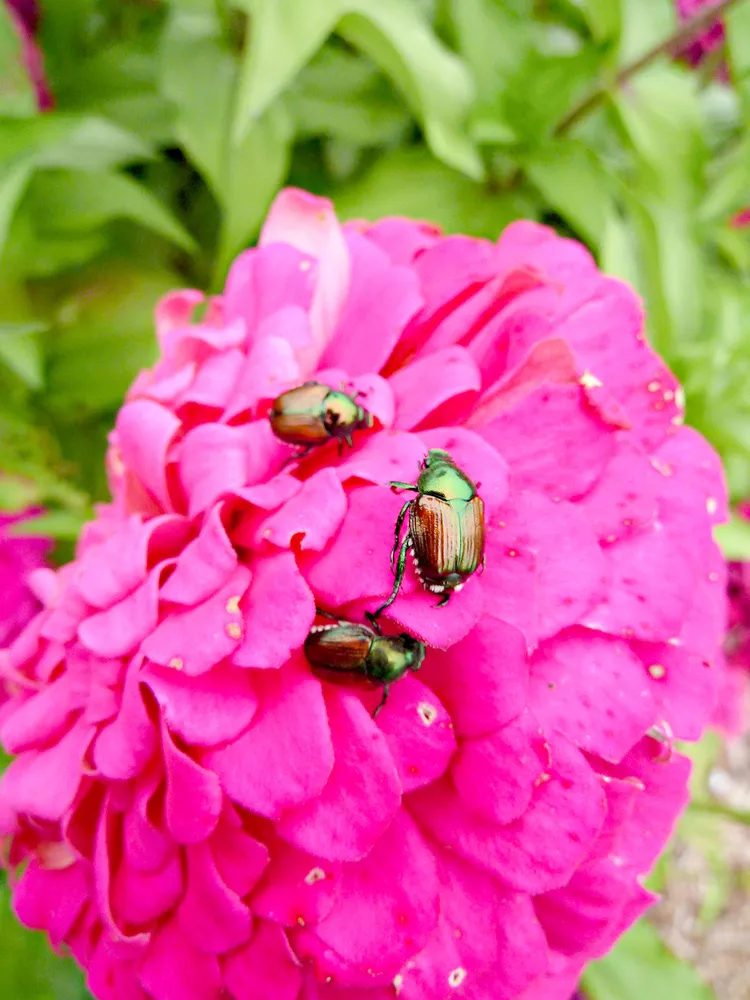When you see garden bugs on your plants, it's tempting to go with a "squish/spray first, ask questions later" response. But insects can be our friends or enemies in the garden, so it's important to determine what you're dealing with before acting. You should figure out if the bugs are eating or harming your plants.
If it turns out that you do have "bad" insects, the best method for helping you figure out how to get rid of bugs in your garden is called Integrated Pest Management (IPM). IPM relies on cultural, physical, biological, and chemical tools used in a way that targets the least toxic options necessary to do the job. Here's how to put this approach to work for you.
How to Get Rid of Garden Bugs
You can use IPM to eliminate bugs on flowering plants, trees, shrubs, and vegetables. Follow these steps with each type of garden bug you encounter, going in order until you reach the effective control level for dealing with the problem.
1. Decide on Acceptable Levels of Garden Bugs
For example, what is the acceptable level of aphids or Japanese beetles in your garden? Some people can't accept any, while others tolerate a small number because they'll do minor overall damage. A hefty infestation causing a plant to decline may warrant action. Still, if the plant seems unaffected other than cosmetic damage, some gardeners prefer to let nature run its course.
2. Practice Prevention
Crop rotation and attracting beneficial garden bugs or other predators are a couple of cultural control strategies (i.e., how and what you grow) that can help minimize pest problems. Suppose you have an invasion of cabbage loopers (small green caterpillars). In that case, you may want to avoid growing plants such as broccoli, cabbage, cauliflower, and kale for a season to starve out the looper population. And to keep grasshoppers at bay, plant marigolds, calendula, or sunflowers nearby to attract robber flies, which attack grasshoppers.
3. Keep a Close Eye on Garden Bugs
Scout your yard at least once a week. In addition to looking for garden bugs that commonly pop up, such as aphids and Japanese beetles, watch out for more specialized pests you know tend to show up every year, such as cucumber beetles in your vegetable garden or sawflies on your roses. The sooner you catch the problem, the easier it will be to nip it in the bud.
4. Get Physical
A strong blast of water from your hose can quickly eliminate the problem of smaller, soft-bodied garden bugs such as aphids. If you find larger pests, such as Japanese beetles or tomato hornworms, knock them off your plants into a bucket of soapy water. (Wear gloves to minimize the "ick" factor if you're squeamish.) For some garden bugs that create a localized problem, such as webworms (caterpillars that make large nests that look like webs in the leaves of trees and shrubs), you can cut away the branches where the infestation is to solve the problem.
5. Wage Biological Warfare
Biological controls can take various forms, but generally, any living creature that has a lethal effect on pests is fair game. Sawflies, for example, can be treated with spinosad, a natural chemical made by soil bacteria that's toxic to garden bugs but not to people or pets. Similarly, Japanese beetle larvae in your lawn can be controlled with milky spore, a natural fungus that targets the grubs. You can also use "good garden bug" predators against some insects, such as ladybugs and lacewings, to gobble up aphids.
6. Apply Chemical Controls
When nothing else seems to be working, and you want to get rid of garden bugs on your plants, you can try a pesticide. There's a large variety of products, some organic (made from natural sources like neem) and some containing synthetic chemicals. Some are broad-spectrum, meaning they'll kill just about any bug, and some are selective and will only kill a certain kind of insect, such as caterpillars. No matter which type you choose, check the label to make sure the pesticide is actually for treating the pest you want to control, and pay close attention to any warnings, such as hazards to pollinators, pets, and people.
Usually, a combination of control measures will give you the best results. For example, you can get rid of squash bugs by protecting plants with a physical barrier like floating row covers, picking the insects off by hand, and planting marigold, calendula, sunflower, daisy, alyssum, or dill to attract beneficial insect predators. Finally, remember that most bugs in your garden won't do much damage, so tolerating them is often the easiest course of action.




















